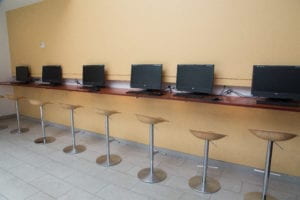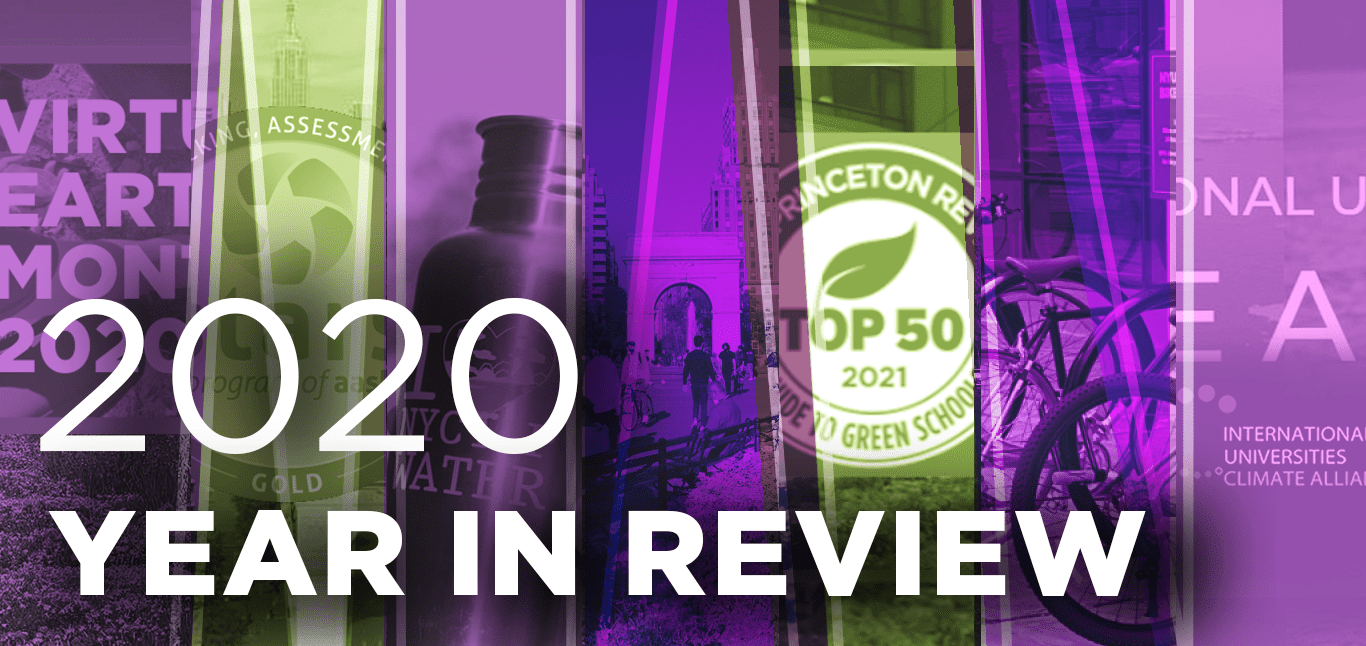Whether you’re studying or working remotely or in an office on campus, here are some best practices for greening your workspace as we move into a new semester. Read more
Tag: Energy
NYU Sustainability 2020 #YearinReview
2020 was a year unlike any other. We joined our colleagues and peers across NYU, the country, and the world in adapting and adjusting to the changes brought on by the COVID-19 pandemic, while continuing to progress in our sustainability work. In many ways, 2020 was an exceptional year for sustainability at NYU: we were recognized and ranked internationally for the collective efforts of students, faculty, administrators, and staff across the University; we launched new initiatives related to environmental and racial justice; and we joined a climate commitment aimed at food-related greenhouse gas emissions – our first non-building related pledge.
Building Energy Scores Posted

Beginning in 2020, many NYC buildings are required to post letter grades that represent their energy efficiency performance, as the city strives to reduce both local pollutants as well as greenhouse gas emissions that cause climate change.
Under the NYC law, most buildings with over 25,000 square feet of floor area must report their energy usage each year, a process called “benchmarking”. A federal energy analysis tool called ENERGY STAR then assigns a 1-100 energy efficiency rating to the building – but only if it falls into a limited number of categories, including apartment buildings, student residence halls, hotels, K-12 schools, offices, supermarkets, and warehouses. Based on that score, buildings then receive a score of A (85-100), B (70-85), C (55-69), or D (54 or below). Buildings also may post an F (if they failed to submit energy use data) or N (if they are not required to report a letter grade, perhaps because ENERGY STAR does not provide a score for that building type).
Energy Savings During COVID-19 Remote Period
 With buildings largely quiet besides non-essential employees, NYU has dramatically decreased energy usage across campus. Much of that reduction occurred organically as people departed their residences or workplaces, turning off lights and bringing home laptops. But, a number of devices — such as printers, copiers, student computer clusters, lobby displays, desk phones, coffee makers and microwaves — were left on.
With buildings largely quiet besides non-essential employees, NYU has dramatically decreased energy usage across campus. Much of that reduction occurred organically as people departed their residences or workplaces, turning off lights and bringing home laptops. But, a number of devices — such as printers, copiers, student computer clusters, lobby displays, desk phones, coffee makers and microwaves — were left on.
A Message from Cecil Scheib, Chief Sustainability Officer
 Hello NYU Community,
Hello NYU Community,
